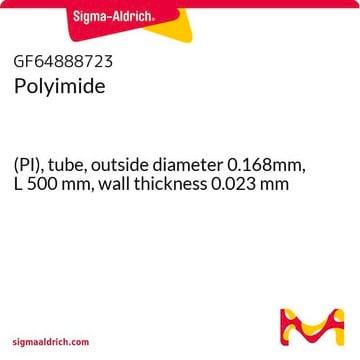おすすめの製品
アッセイ
≥99.999%
フォーム
wire
自己発火温度
1400 °F
メーカー/製品名
Goodfellow 937-413-30
抵抗性
2.6548 μΩ-cm
L ×直径
10 m × 2.0 mm
bp
2460 °C (lit.)
mp
660.37 °C (lit.)
密度
2.7 g/mL at 25 °C (lit.)
SMILES記法
[Al]
InChI
1S/Al
InChI Key
XAGFODPZIPBFFR-UHFFFAOYSA-N
関連するカテゴリー
詳細
For updated SDS information please visit www.goodfellow.com.
法的情報
Goodfellow製品
保管分類コード
13 - Non Combustible Solids
WGK
WGK 3
引火点(°F)
Not applicable
引火点(℃)
Not applicable
適用法令
試験研究用途を考慮した関連法令を主に挙げております。化学物質以外については、一部の情報のみ提供しています。 製品を安全かつ合法的に使用することは、使用者の義務です。最新情報により修正される場合があります。WEBの反映には時間を要することがあるため、適宜SDSをご参照ください。
労働安全衛生法名称等を通知すべき危険物及び有害物
名称等を通知すべき危険物及び有害物
Jan Code
GF93741330-1EA:
最新バージョンのいずれかを選択してください:
C A Shaw et al.
Immunologic research, 56(2-3), 304-316 (2013-04-24)
We have examined the neurotoxicity of aluminum in humans and animals under various conditions, following different routes of administration, and provide an overview of the various associated disease states. The literature demonstrates clearly negative impacts of aluminum on the nervous
M A Santos et al.
Current medicinal chemistry, 19(17), 2773-2793 (2012-03-30)
This review is focused on recent developments on hydroxypyri(mi)dines, as aluminum and actinide chelating agents to combat the toxicity due to accumulations of these metal ions in human body resulting from excessive metal exposure. After a brief update revision of
Joseph Lemire et al.
Journal of inorganic biochemistry, 105(11), 1513-1517 (2011-11-22)
Aluminum (Al) has been implicated in a variety of neurological diseases. However, the molecular mechanisms that enable Al to be involved in these disorders have yet to be fully delineated. Using astrocytes as a model of the cerebral cellular system
Christopher Auger et al.
Biotechnology advances, 31(2), 266-273 (2012-12-04)
As our reliance on aluminum (Al) increases, so too does its presence in the environment and living systems. Although generally recognized as safe, its interactions with most living systems have been nefarious. This review presents an overview of the noxious
Maire E Percy et al.
Journal of inorganic biochemistry, 105(11), 1505-1512 (2011-11-22)
In 1991, treatment with low dose intramuscular desferrioxamine (DFO), a trivalent chelator that can remove excessive iron and/or aluminum from the body, was reported to slow the progression of Alzheimer's disease (AD) by a factor of two. Twenty years later
ライフサイエンス、有機合成、材料科学、クロマトグラフィー、分析など、あらゆる分野の研究に経験のあるメンバーがおります。.
製品に関するお問い合わせはこちら(テクニカルサービス)






